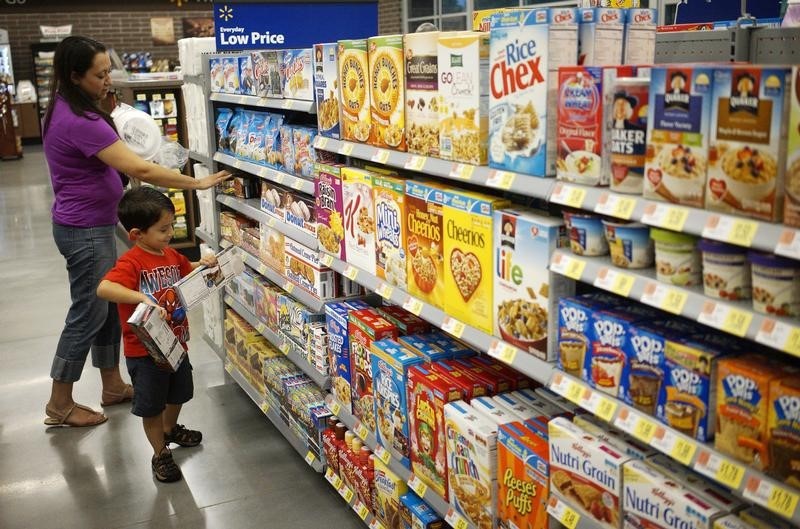U.S. Consumer Spending Surges; Inflation Creeping Up


A woman and child shop at a Walmart to Go convenience store which is open on a trial basis in Bentonville, Arkansas June 5, 2014. REUTERS/Rick Wilking
U.S. consumer spending recorded its biggest increase in more than six years in April and inflation rose steadily, more signs of an acceleration in economic growth that could persuade the Federal Reserve to raise interest rates again as early as June.
The Commerce Department said on Tuesday consumer
spending, which accounts for more than two-thirds of U.S. economic activity, surged 1.0 percent last month as households bought automobiles and a range of other goods and services.
Consumer spending in March was revised down to show it being flat instead of the previously reported 0.1 percent gain.
Last month’s increase was the largest since August 2009 and beat economists’ expectations for a 0.7 percent rise. When adjusted for inflation, consumer spending shot up 0.6 percent, the biggest gain since February 2014, after being flat in March.
The dollar extended gains versus a basket of currencies after the report, while prices for U.S. government debt fell. U.S. stock futures pared gains.
The strong consumer spending report joined data on goods exports, industrial production, housing starts and home sales in suggesting the economy was regaining momentum after growing at a lackluster 0.8 percent annualized rate in the first quarter.
The personal consumption expenditures (PCE) price index, excluding the volatile food and energy components, rose 0.2 percent last month after edging up 0.1 percent in March. In the 12 months through April the core PCE rose 1.6 percent after a similar increase in March.
The core PCE is the Fed’s preferred inflation measure and is running below the U.S. central bank’s 2 percent target.
Minutes from the Fed’s April 26-27 policy meeting published recently showed most of its policymakers considered it appropriate to raise rates in June if data continued to point to an improvement in second-quarter growth.
Similar sentiments were echoed by Fed Chair Janet Yellen who said on Friday that a rate hike would probably be appropriate in the “coming months.” The U.S. central bank lifted its benchmark overnight interest rate in December for the first time in nearly a decade.
Last month, consumer spending was buoyed by a 2.3 percent jump in purchases of long-lasting manufactured goods, with automobiles accounting for most of the increase. Purchases of nondurable goods surged 1.4 percent and spending on services increased 0.6 percent.
Personal income increased 0.4 percent last month after rising by the same margin in March. Wages and salaries rose 0.5 percent after advancing 0.4 percent in March.
With spending outpacing income, savings fell to $751.1 billion last month from $809.4 billion in March.
Политика конфиденциальности | Правила пользования сайтом







